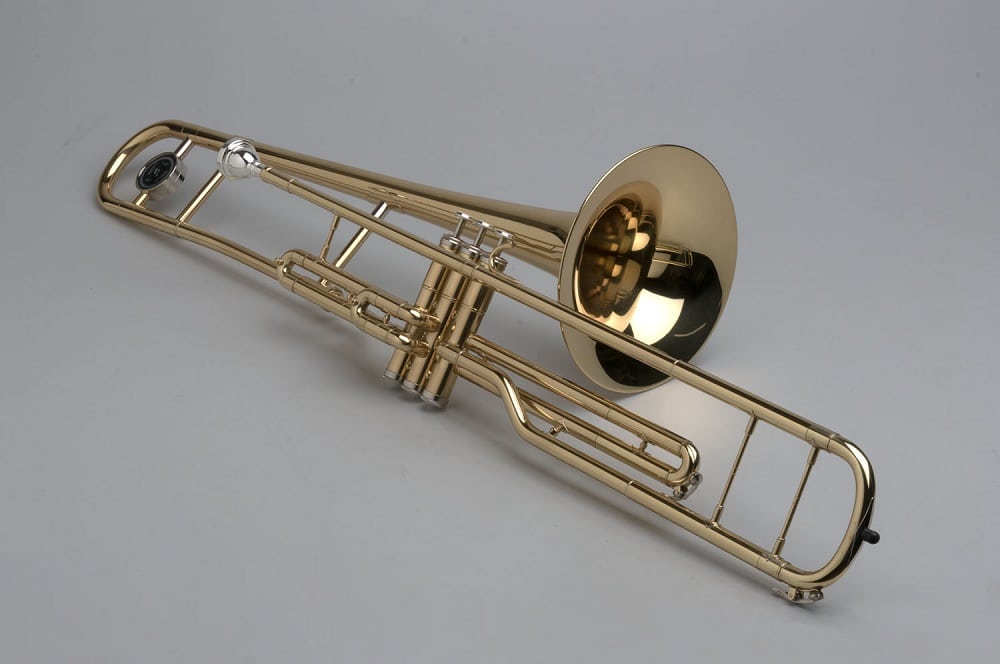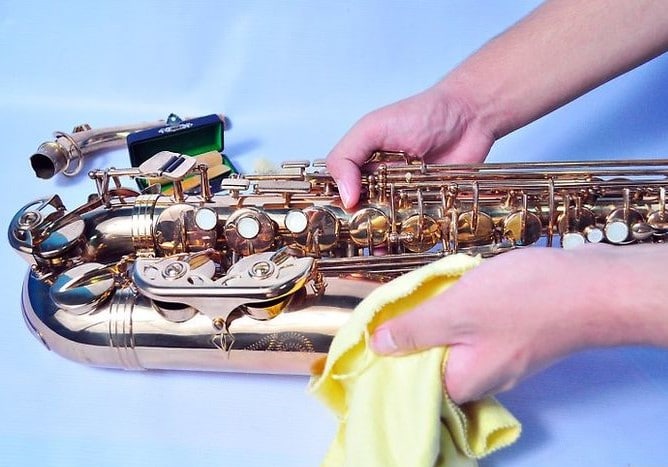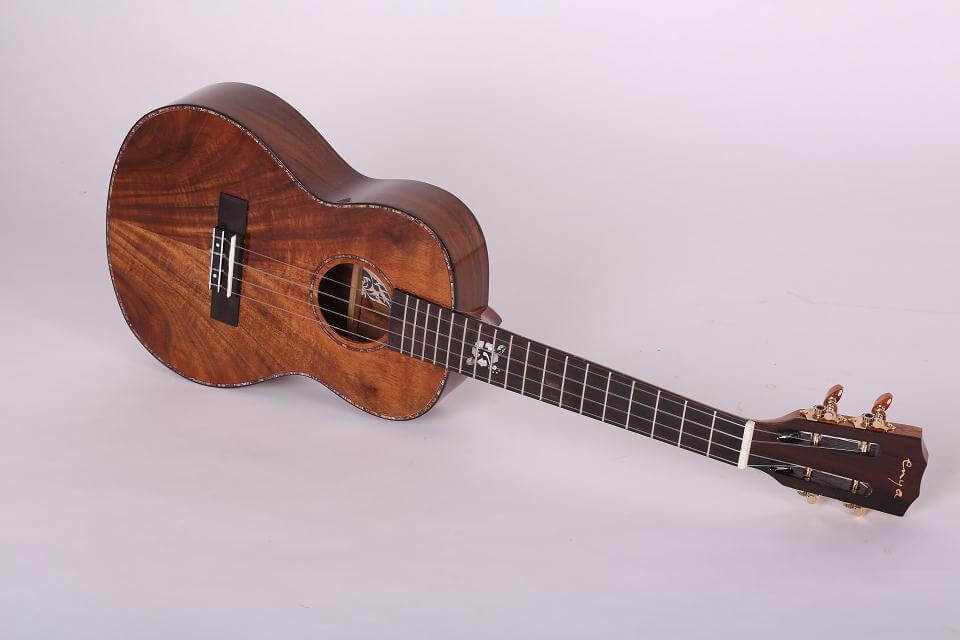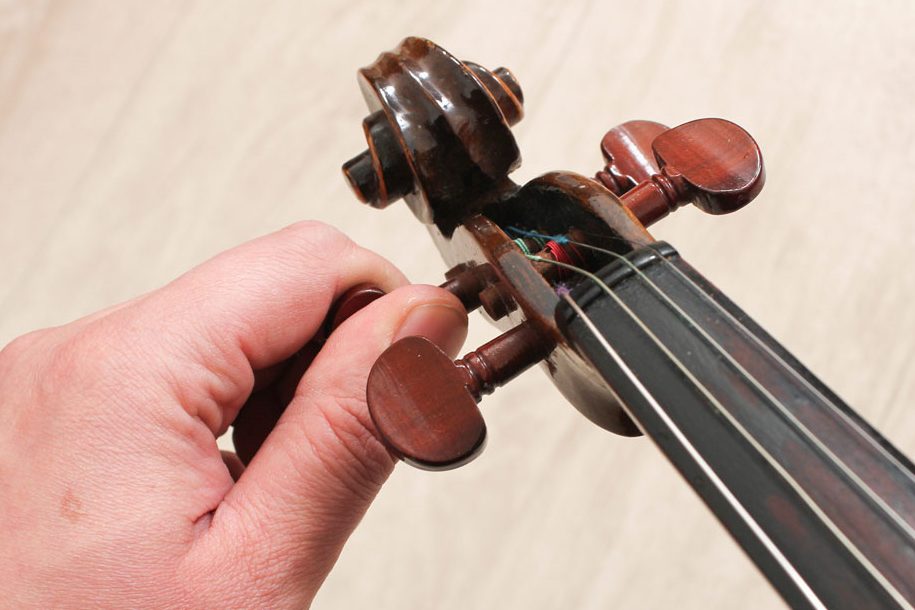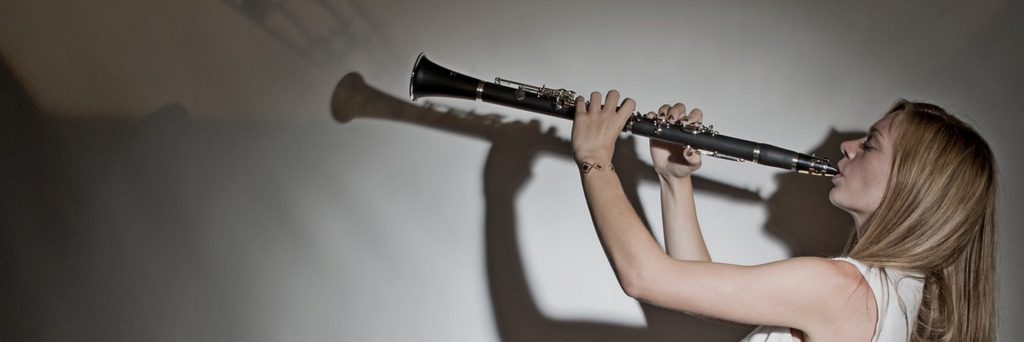Buying your first DJ controller could be puzzling. There are so many options on the market, some of which are just terrible in many ways. They could be hard to use, have very few features or simply break after a short amount of time. That’s why we’ve decided to put together this guide for you – to help you purchase the best DJ controller for beginners.
To make our selections, we had to look at features like software. Most of our picks come with an included Serato software as it is extremely accessible for newcomers. The number of channels should also not be overlooked, entry-level controllers usually come with two channels, which are more than enough to get you started with mixing and honing your skills with EQing, using effects, and more. Sometimes you’ll find four, which allows for more room for advancement. We’ve looked at more than 40 different models and came up with a list of 7 top picks, where the Hercules DJ Control Inpulse 200 deserved to be the best one.
Extra features: headphones included, IMA
The DJCentral music deck is designed to fit both beginners and expert in the game of DJing equally. The techniques to using the music deck are quite easy and simple to understand. Just be following a few instructions and reading through the user’s manual, you’re good to go!
It has a compact design and a DJUCED DJ software that can be helpful to make DJing much easier. Asides the DJUCED DJ software that comes with the DJCentral music deck, it also has a feature known as the Intelligent Music Assistant.
The function of the Intelligent Music Assistant is to help DJUCED suggest songs that correlate with the existing vibe and energy of the playing song(s).
If you’re a beginner in the DJing game, with this central music deck, you do not have to always look at the computer. This is possible because the Beatmatch guide has onboard light guards that’ll help you navigate through without hassle.
The desk also has a tempo guide to show you where to move the tempo fader. Furthermore, it has the beat align feature to identify where to turn the jog wheels. You’re at liberty to cue, pitchbend and trackbrowse with this DJCentral music deck because it has a double deck layout and and capacitive jog wheels.
The four control modes of the music deck are hot-cues, FX, rolls and sampler. All of which are indicated by the 8 multiple colored performance pads.
Extra features: touch-sensitive metal jog wheels, multi-function touchstrip
The Mixtrack Pro 3 by Numark is undoubtedly one of the best beginner DJ controllers on the market, today. It comes with Serato DJ, although you can upgrade, should you like. The two channel controller features all of the necessary requirements and needs a beginner DJ will have, while also being capable of delivering a solid performance immediately.
The USB-powered controller is incredibly easy to set up and use, and only has RCA unbalanced ports on the rear, but overall, the design is interesting, yet intuitive. It isn’t the most compact nor lightweight controller out there, but it makes up for this in terms of features. As it is so wide, it gives you ample space around the control so you’re not contorting your hands and trying to make sure you don’t accidentally bump something unintentionally.
The mixer section is more than adequate, featuring 3 band EQ to kill with a dual hi/low pass filter, which is on surprisingly few beginner DJ controllers these days. Something else that is rarely featured on entry-level gear, are volume meters. This one has them, indicating up to three greens, an amber, and a single red LED, however, it is for the master out only, and not the cued-up track.
The jog wheels are touch sensitive, free-spinning, and can work pretty well for scratching (for the budget, that is), and can also be used to bend the pitch or as a shift-track scrubber. Another feature we absolutely loved, and is extremely hard to find on a controller in this price range, are the full-sized, 100mm pitch faders, perfect for learning how to control pitch without looking at the screen. You can assign 3 Serato DJ intro effects per deck, and these are managed by the touch strip, which we haven’t seen on a controller in this budget range.
Extra features: comes with stand, polishing cloth, and headphones
If you want the DJ controller with the best package, then you cannot say NO to this model It comes with a host of things that make it not just the best package option, but that with one of the best affordability on the market. If you are a DJ that wants are rig for scratching, then this comes with plenty of features that you would like.
One of the best things here are the controls. They are very comprehensive and are excellent on this dual-channel controller. Another excellent feature here are the dedicated controls. One of these are the Pitch and Time controls. These will certainly make your work more interesting. There is also the Key Lock. For scratching, there isn’t any other option that gives you such versatility.
Also, the Panel button comes with several functions and is one of the most versatile. It is super easy to use and you can use it to find important parameters like the BPM and Artists. Aside from all these, the pads feel really great to use, with the knobs displaying excellent tactile feedback as well.
There are several outputs here to boot, with the model features balanced booth ouputs. With this model, you certainly DVS plugin.
Extra features: supports WEDJ
Pioneer’s DDJ WeGo4 is a two-channel controller with two band EQ, a dedicated filter knob, cues, short throw channel faders, and unique-looking, light up jog wheels. The biggest “pro” of the controller is the fact that it’s compatible with virtually all DJ software, and is also one of the most portable controllers on the market today.
Let’s go back to the compatibility with DJ software, first. TheWeGO4 is compatible with various software/DJ apps on all kinds of platforms. For mobile devices, it works with djay 2 on Android and iOS. On a laptop it can be MIDI-mapped to Rekordbox DJ, djay Pro, and Virtual DJ. IT can also be used with Pioneer DJ’s newer WeDJ software, made for iOS. This opens up the controller to all types of consumers, most notably for those who don’t have a laptop to use for DJing.
It features buttons for cueing the left and right decks, as well as the Master output. The volume faders, pitch faders, and the crossfader are all short throw, so the resolution isn’t the best when you’re adjusting levels/BPM, but they’re fine enough.
While it’s definitely convenient, there are a couple of things that weren’t as well-designed as we’d hoped. First, we would’ve liked to have seen at least 3 band EQ, but instead, this controller just has the lows and highs. In addition, the design of the controller is quite “toy-like” due to the jog wheel lights and chunky design.
Extra features: portable
This ultra-portable, pocket-sized controller is perfect for everyone: kids as well as adults, and absolute beginners as well as pros who want to practice while on the road. Despite being so small and weighing in at a mere 11.8 ounces, it has everything you’ll need to get started: a built-in sound card, plug-and-play connectivity, and Serato DJ intro. You can opt to upgrade to the full software version if you’d like, and it can be MIDI-mapped to virtually any DJ software.
The controller features all of the essentials: two channels, a crossfader, jog-wheels, and pitch faders. It also has four different pad modes so you can easily choose cue points, auto/manual looping, as well as sample playback.
While this mini controller has plenty to offer, there are certain aspects we weren’t fans of. First of all, if you really want to learn how to EQ mix, you can’t do it on this unit, considering it doesn’t have them. Rather, you’ll have to mix between songs through the crossfader, and the crossfader, alone. Second, it’s easy to accidentally bump the jog wheels considering they’re so small. You’ll have to really be careful with that, as well as accidentally hitting the crossfader or pitch faders. The pitch faders are also quite short, which can make hitting the proper BPM a bit more of a challenge, but it’s definitely possible.
All in all, if you’re looking for a controller that’s perfect for traveling, taking to gigs, and just about anywhere else, then this is undoubtedly the easiest one to pack along.
Extra features: 8 RGB pads per deck, 3-band equalizer, built-in professional 24-bit PC/MAC audio interface
Do you wish to mix music? The Gemini SLATE is designed to make it easier than ever with RGB backlit pads, newly designed capacitive jog wheel, and a familiar layout designed to make it easy for all DJ’s from beginner to professional.
It has two full-featured decks, two channels of mixing, two rows of pads, and multiple colors all in a thin but strong enclosure, making the SLATE a dynamic and reliable controller that is portable enough for the most outrageous environments. The SLATE’s DJ tools, including pitch fader, key-lock, and advanced effect controls, give you instinctive control.
Furthermore, the full 2-channel mixer gives you constant access to the EQ and dedicated filter controls. Master RCA outputs, headphone, and microphone inputs give you all that you could need when it comes to I/Soothed pre-mapped FX controls for Serato DJ Intro bring immediate results upon first use, while the fully MIDI mappable and high-resolution controls give the SLATE the ability to easily be adapted for use with any of your favorite DJ applications.
It is blessed with a USB/MIDI software controller with built-in professional 24-bit PC/MAC audio interface and a 2-channel mixer with 3-band equalizer & dedicated filter control on each channel. Furthermore, it has an item weight of 4.7 pounds and a product dimensions of 18.9 x 11.42 x 4.33 inches.
Extra features: Pad Scratch
The Pioneer DDJ-SB3 is very similar to the DDJ-RB in many ways, but there are still some very notable differences. One, is that the RB features the full license key to Rekordbox, while this one only comes with Serato Intro. Upgrading will cost you almost $100, unless you catch it during a sale or opt for $10/month subscription.
The biggest selling point of the SB3 is that it has many trickle-down features from more expensive gear, providing an excellent way to get started in the DJing world. A somewhat-controversial, yet unique feature Pioneer put on this controller, is a button that literally scratches for you. It’s not going to necessarily teach you how to scratch, but it’s a fun little feature.
With headphones, you must make sure you have an 1/8” mini jack connector, because, unlike the SB and SB2, it doesn’t have the option of using headphones without it. The build is very lightweight, albeit a slightly “plasticky” feeling. Despite this, it’s quite durable. You’ll find 8 performance pads under the jog wheels, as well as trim, 3-band EQ, and individual channel filters, which is quite generous.
Speaking of the jogs, they’re well-made (aluminum construction), responsive, and reliable. While it is a two-channel controller, there are actually four “decks” available, once you hit the switch to go between deck 1 and 3 on one side, and 2 and 4 on the other. The metal transport buttons that look practically identical to the RB’s are a huge improvement on the previous model that had the rubbery ones. The pitch controls are small and short, but are good enough for accurate beatmatching. You can also use key lock for fixing pitch as you change the tempo.
With the huge variety of DJ controllers out there, choosing the best one for a beginner’s needs can be a challenge! Our buying guide will cover everything you need to consider, from the basics to the nitty-gritty, to help you choose the right model.

There are quite a few features to consider when choosing a starter-level controller. First, you’ll want to look at software and compatibility with various devices, which we’ll cover in-depth in the next section. Next up, make sure the controller is well-built. As you’re just learning, you’re probably going to be pretty hard on it, covering hundreds of hours practicing and learning. Ideally, the pitch fader will be long so you can learn how to beatmatch without relying on visual aids. Jog wheels should be durable, yet responsive to your touch. It’s a bonus if you can also use them for scratching or scrubbing quickly through tracks. We’d recommend making sure your controller features a 3-band EQ so you can learn how to EQ mix properly, to make progressing to pro-level equipment more natural.

Most controllers can be MIDI-mapped to virtually any DJ software, even if it doesn’t come with the program – it’s better to make sure that’s the case, rather than find out once you’ve taken it home, that it isn’t compatible.
Most entry-level DJ controllers are going to come with 2 channels. Each channel can play one track, sample, vocal, etcetera. Two channels are more than enough to get you started with mixing and honing your skills with EQing, using effects, and more. However, some controllers offer 2+1 decks so you can remix a track, or even 4 decks, where you can really start advancing, mixing up to four tracks, vocals, and samples at once. If the controller you want has 4 decks, don’t feel intimidated. You don’t have to use all four, but it is nice to have the option is you do want to advance to that many.
It’s important to make sure your controller has the proper inputs and outputs you require to accomplish what you want. Ideally, make sure that it has at least a USB port so you can easily connect it to your laptop.
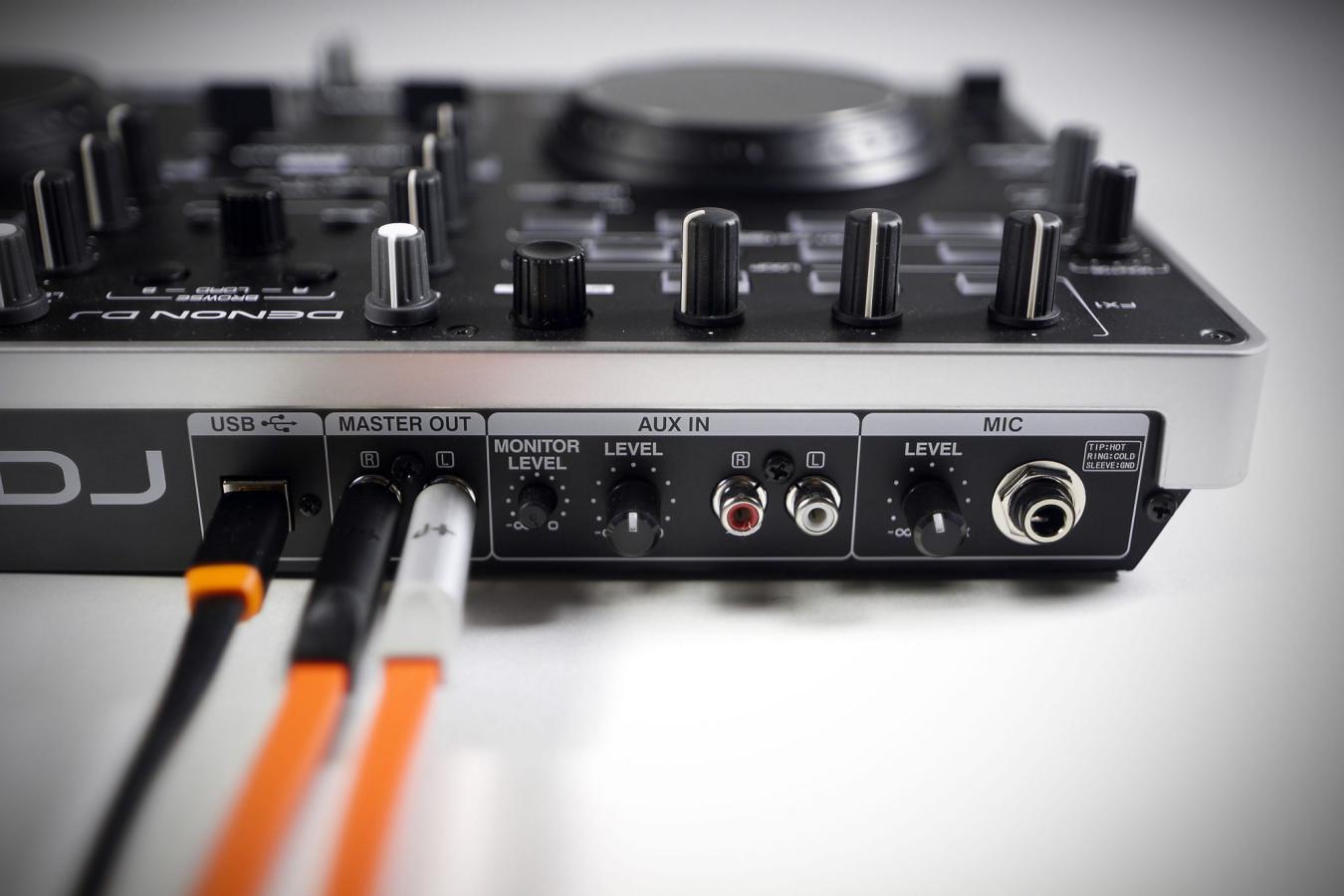 USB and Internal Memory
USB and Internal MemoryYou’ll also want to take into consideration how your controller saves cue points. This is important, because if it the controller does not have the internal memory to do so, you’ll have to save it to a USB, and if you for some reason forget your USB, then you’ll be without your cue/loop points. In addition, take into consideration how many USB ports your controller has. Most at this level only have one to directly connect to a laptop, but more means you can hook up extra equipment or even charge your phone!
You’ll want jog wheels to be good-sized, responsive, but not too touchy. Ideally, the jogs will be made out of aluminum, or another type of metal that’s durable. You’ll want to be able to beatmatch, scrub through tracks, and even pitch songs up and down with the jogs.
Extra accessories with your controller are never a bad thing! However, let’s look at both sides of the coin, here. Free is always good, and it’s great that with a package like the DDJ-RB, you have your laptop stand and headphones with your controller, so that’s quite a bit less money you’d have to spend aside from that. However, you may prefer other headphones to the ones that the bundle comes with. They’re usually not going to be as high-quality as your regular DJ headphones, so keep that in mind when thinking that this may be a hot deal.
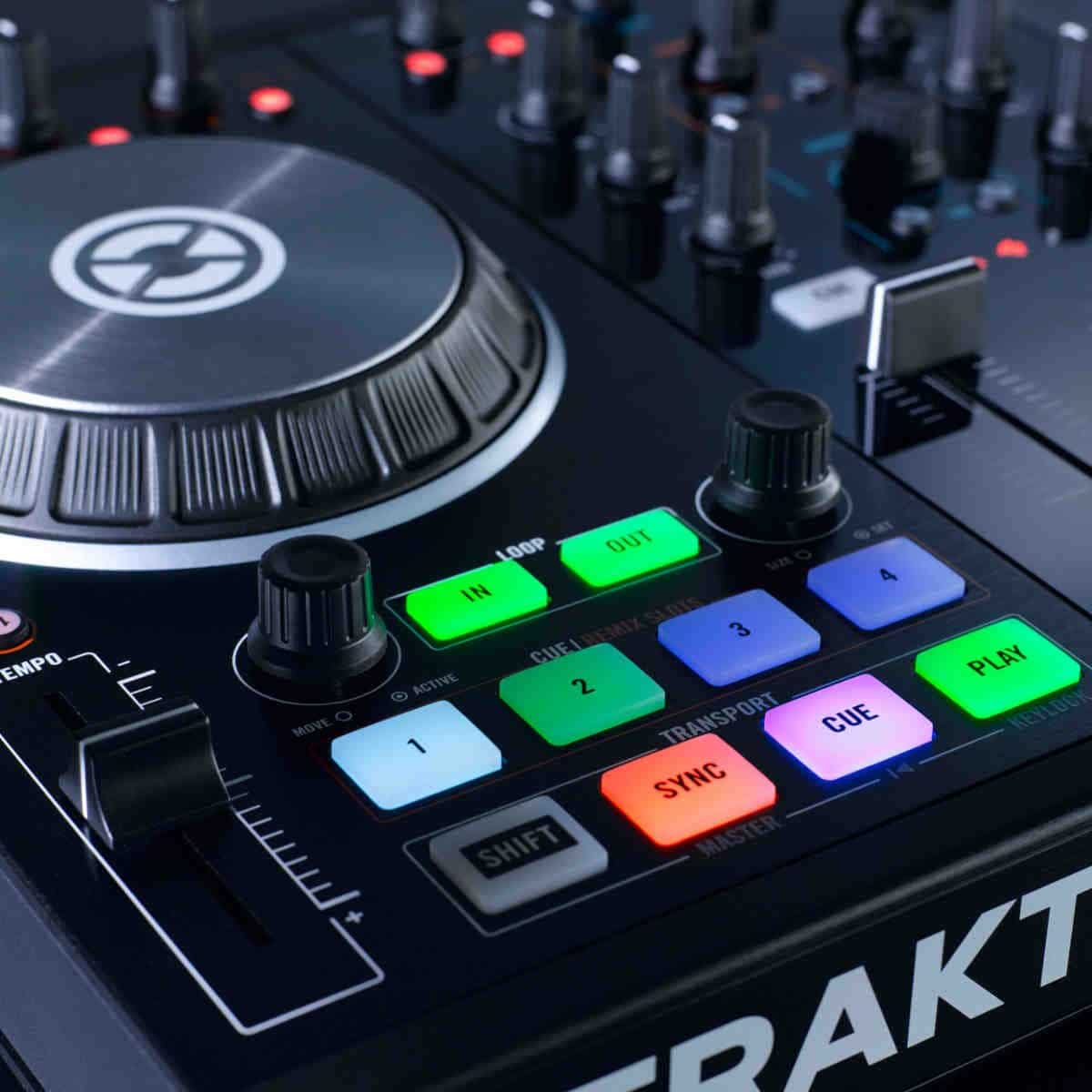
If you’re planning on using your controller for gigs, you’ll definitely want to think about how convenient and easy it is to carry.
This is pretty much in the same vein as the last point, but if you’re going to be traveling with your controller, make sure it’s at least under 5 pounds, preferably.
Please briefly answer the following questions:
We absolutely fell in love with three of the best DJ controllers for beginners here. Can you guess which ones they are? Well, the first, is the Hercules DJControl Inpulse 200. The steel chassis is a bit heavier, but it’s the most durable in its class. It features touch-activated jog wheels, is extremely easy to use, and has full-sized pitch faders and sample and Hot Cue pads. Second, is the Numark Mixtrack Pro 3. It also has high-quality build and knobs, the full Traktor license, gorgeous LEDs, a pro-level mixer area, and all kinds of effects and loops included. Last up, is the Pioneer DDJ-SR2. It comes with many pro-level features, making it so much easier to progress to full pro-level equipment. It is nice and lightweight, while being durable, has 3-band EQ, 3 effects per deck, and a dedicated filter knob. So, out of these best DJ controllers for beginners, which one will be making its way into your shopping cart?
